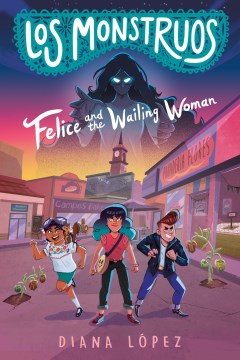by Diana Lopez

Felice, a twelve year old Mexican American girl, is being raised by her Uncle Clem since her mother and younger brothers drowned so many years earlier. As a result of her traumatic experience, she is extremely afraid of water and this fear holds her back in so many ways. One day, she discovers that her mother is the infamous La Llorona, a mythical creature that lives in the river and drowns anyone she can lure there. Believing that she can meet her mother, bring her some peace and overcome her own fears, Felice travels to Tres Leches, the border town where the tragedy occurred. Along with the mayor and two new friends, who also happen to be the offspring of monsters, Felice overcomes her fears and helps her mother accept her loss thus freeing the town from its curse.
This story weaves Mexican folktales and culture into a modern day fantasy piece that moves along quickly. The characters are well-written and quirky and the end is touching and magical. Recommended for those collections where a fantasy is appreciated.
